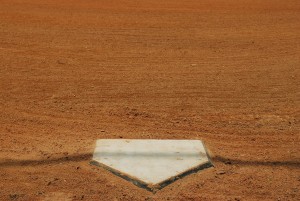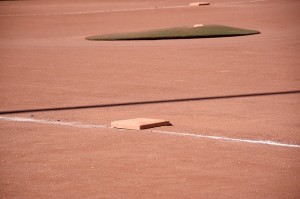Posted on
May 22, 2018 by
Martin Banks
As America’s favorite pastime, baseball is an excellent way to stay in shape, make new friends and get outside on beautiful days. However, if you live far away from a park, you might want to build a diamond somewhere closer to home.
Whether you’re building a diamond for yourself, your kids or a professional or local team, here are three basic tips to help you create an epic baseball diamond.
1. Hit a Home Run, Not Someone’s Car
A practical place to start in your diamond-building endeavor is to find an ideal spot for the field. Things you should take into consideration may be location, proximity to traffic and measurements of the field. This may vary depending on who will use the field — including whether it’s for professional or recreational use.
Depending on how you plan to use the field, the size will differ from one age group to the next. Also, remember that after you determine your field measurements, you may want to calculate room for visitors and spectators to park and sit.
When foul balls inevitably happen, be sure to have a net or the standard 60 feet of bushes to help block the ball from hitting fans, cars or other potential victims. You should also ensure the field will not be at a low elevation or a floodplain. Verify there is sufficient water drainage to avoid water damage, as well.
2. Know Your Numbers
Before you break ground, it’s good to know what your numbers look like so you know what to expect. Take a close look at your budget, including a plan for maintaining the field after you build it. You can create a beautiful state-of-the-art field, but if you don’t take care of the turf, dirt or soil afterward, you’ll waste money down the road on repairs.

Once you have a complete understanding of your budget, you will know what kind of materials and layouts you can afford. This will give you a better vision of your field and help in the decision-making process. For example, if you want to build a field for a college or high school, you may want to use different materials than what Wrigley Field has.
The pitcher’s mound and batter’s box will need higher amounts of clay to maintain quality throughout use — around 40 percent is a good number. The infield, overall, however, doesn’t need quite as much. You want to have the amount of sand under 75 percent to keep the infield from becoming dry. An ideal infield mix is 25 to 50 percent clay and silt with 50 to 75 percent sand.
To save money in the long-run, it’s crucial that you care for your field after you build it. You can easily maintain the integrity of your field by hiring a field manager or turf consultant.
Once you have a solid idea of what you want the field to look like, where you want it to be and what kind of professionals you may want to hire, you’re ready to start building.
3. Start From the Ground Up
Players, coaches and empires alike will all appreciate a level playing field — both literally and figuratively. Make sure that when you break ground, you do it right.

You may need machinery such as rollers, loaders and excavators to help move dirt and flatten the land. These can be expensive to purchase but renting them is a cost-efficient way to go.
After you have flattened the land, you can measure the field and mark your bases. A standard baseball diamond is a 90-foot square with sliding room around the bases, but there’s room to move for the outfield and fences.
If You Build It, They Will Come
By following these tips, you can build the baseball diamond of any player’s dreams. Enjoy your new home turf — play ball!












